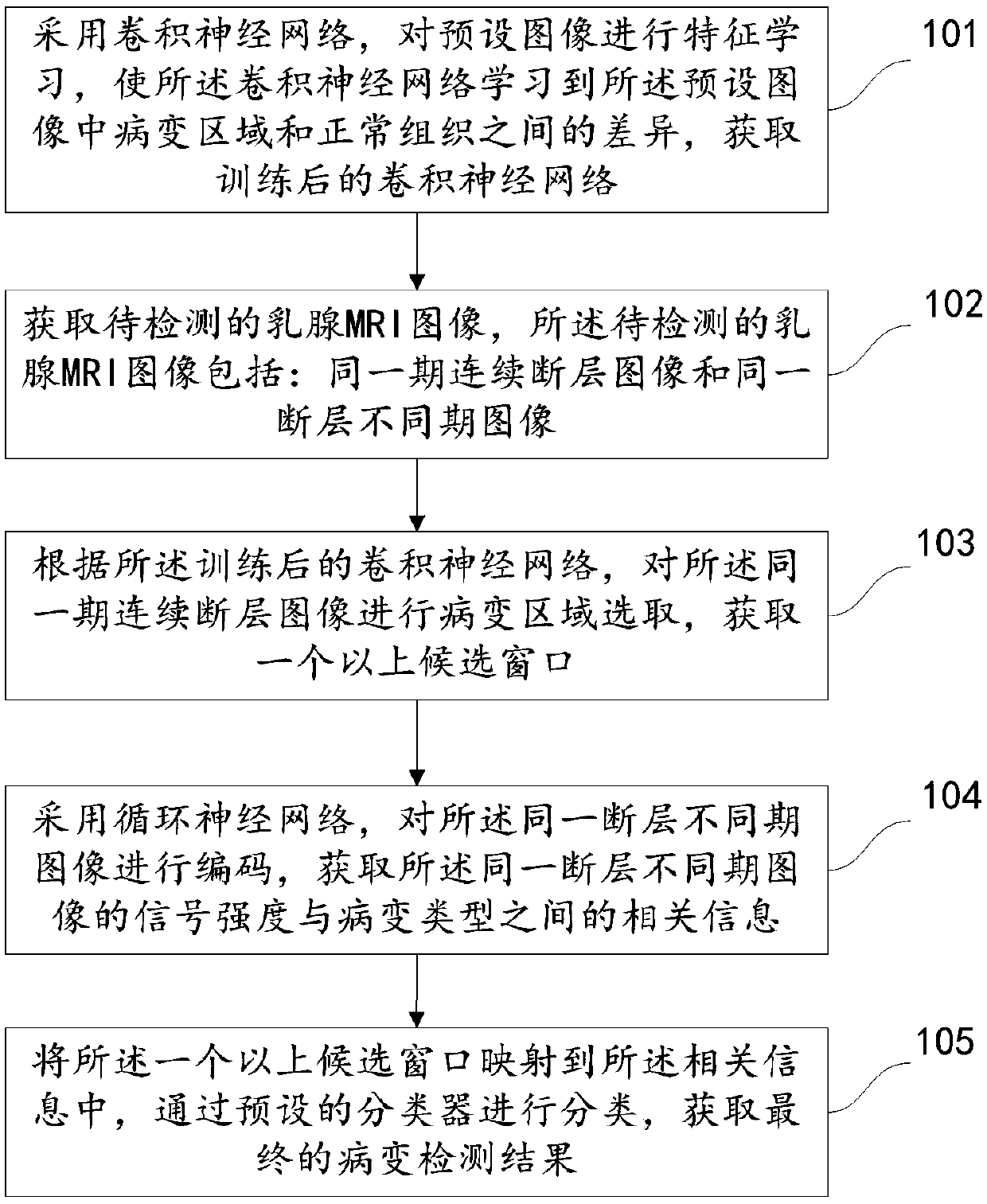mammary gland MRI lesion area detection method based on multi-dimensional information fusion
A lesion area and detection method technology, which is applied in image data processing, image enhancement, instruments, etc., can solve the problems of difficulty in distinguishing, inaccurate breast magnetic resonance image detection results, and low recall rate of target detection in lesion area, etc. The effect of classification accuracy and accurate detection
- Summary
- Abstract
- Description
- Claims
- Application Information
AI Technical Summary
Problems solved by technology
Method used
Image
Examples
Embodiment Construction
[0019] In order to make the object, technical solution and advantages of the present invention clearer, the present invention will be further described in detail below in conjunction with the accompanying drawings.
[0020] In the present invention, we adopt the algorithm based on candidate regions in natural image target detection, and propose to use convolutional neural network to extract breast MRI image information of different sections and different time sequences, and use images of different sections mainly for the extraction of candidate regions. A method for further classifying and judging candidate regions by using images of different time series.
[0021] figure 1 It is a flow chart of a method in an embodiment of the present invention, specifically including the following steps:
[0022] Step 101, using the convolutional neural network to perform feature learning on the preset image, so that the convolutional neural network can learn the difference between the lesi...
PUM
 Login to View More
Login to View More Abstract
Description
Claims
Application Information
 Login to View More
Login to View More - R&D
- Intellectual Property
- Life Sciences
- Materials
- Tech Scout
- Unparalleled Data Quality
- Higher Quality Content
- 60% Fewer Hallucinations
Browse by: Latest US Patents, China's latest patents, Technical Efficacy Thesaurus, Application Domain, Technology Topic, Popular Technical Reports.
© 2025 PatSnap. All rights reserved.Legal|Privacy policy|Modern Slavery Act Transparency Statement|Sitemap|About US| Contact US: help@patsnap.com



